As Delhi prepares to vote on 25 May, the impact of the February 2020 riots will be a key factor in determining the outcome in the Northeast Delhi parliamentary constituency, where Congress’s Kanhaiya Kumar, supported by the AAP, faces off against BJP’s Manoj Tiwari, who won in both 2014 and 2019.
“Only we know what we lived through, and continue to experience. They are gradually taking over the neighbourhood as Hindu families are leaving one by one,” said Sanjay, who prefers to go by one name, a resident of Chand Bagh, which saw fierce street battles between Hindu and Muslim mobs in the 2020 riots.
Sitting in his small grocery shop located next to houses owned by Muslims, Sanjay spoke in hushed tones, betraying a sense of anxiety and continuing mistrust between the two communities in the colony that have people from both faiths.
Across the road, in Yamuna Vihar, a near identical, if sharper, sentiment prevails. More affluent than its working-class mixed faith neighbourhood, Yamuna Vihar is primarily home to Hindu families, many of whom have rented out their premises to coaching centres preparing students for competitive examinations.
An advocate, who spoke on the condition of anonymity, said the BJP is likely to attract most votes from locals in Yamuna Vihar, and accused the AAP-Congress of instigating the riots, echoing the words of Prime Minister Narendra Modi who invoked the violence while addressing a rally in Shastri Park last Saturday.
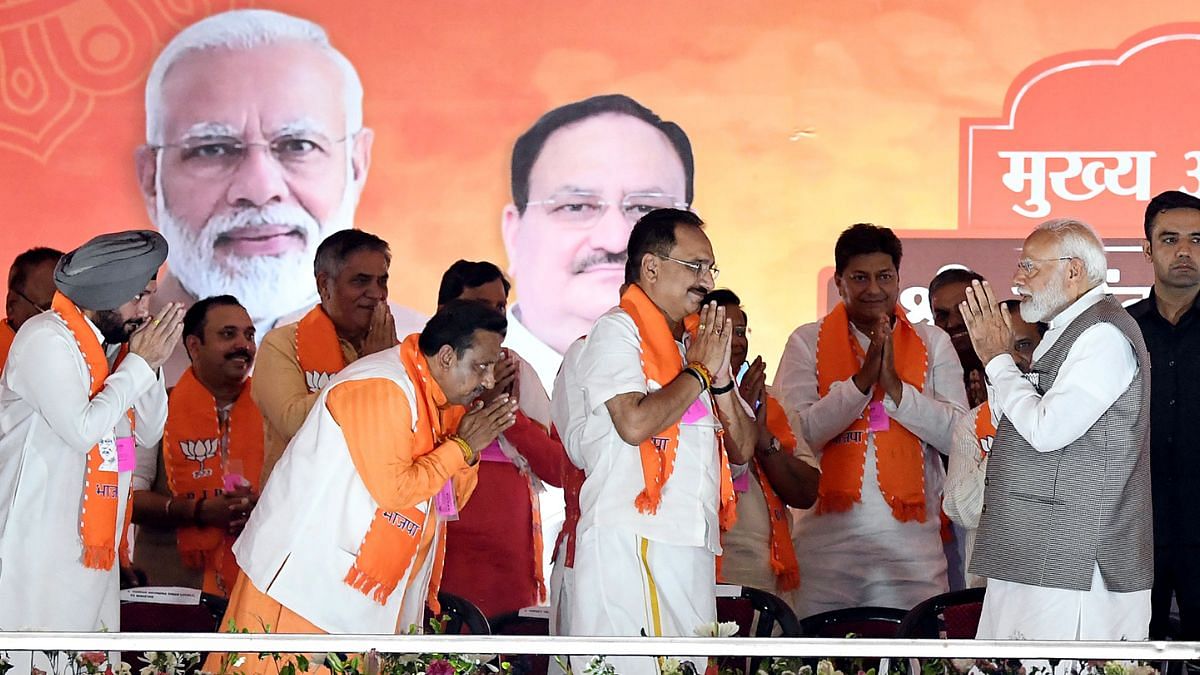
“When CAA was introduced, they first held the city to ransom for two months and then triggered riots,” Modi said, accusing the AAP-led Delhi government of practicing “vote jihad”. These efforts to stir communal tensions resonate widely in the area, where the wounds from the riots remain fresh.
For instance, in Karawal Nagar of the constituency, among the sites of violence in 2020, Rajesh Verma, a goldsmith, was clear that despite “downturn in the market and soaring prices, which has made life miserable for a lower middle-class person like him”, his family’s vote is going to be for Modi.
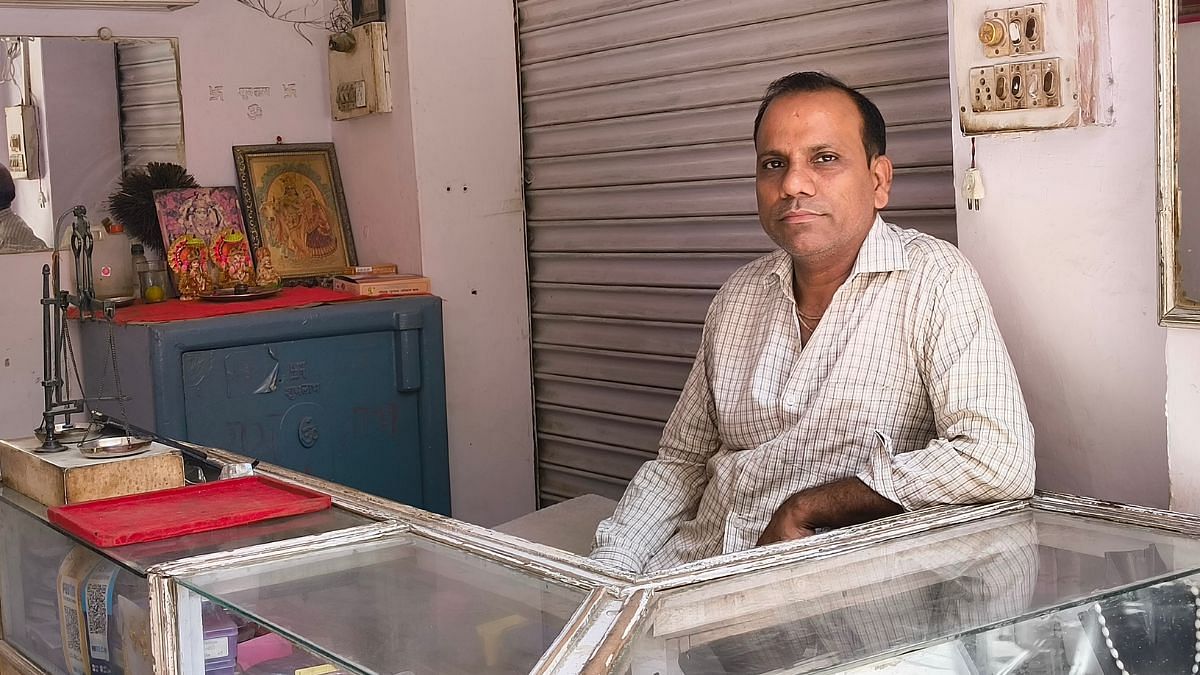
“You see, people consider larger things while voting in the Lok Sabha elections. No prime minister has raised the country’s stature like Modi. He has fulfilled the dreams of millions by building the Ram Temple in Ayodhya. Broken roads, dirty tap water, price rise are issues that he could not address. But these are to be addressed by local leaders, not him,” Verma said.
In conversations, the name of BJP’s candidate Tiwari, a popular Bhojpuri singer and actor who won the 2019 elections defeating Congress’ Sheila Dikshit by over three lakh votes, comes up rarely, if ever. Some say he comes across as a friendly person, while many complain about his performance, while quickly adding that their vote was “not going to be for Tiwari, or even the BJP, but for Modiji”.
Many of these voters backed the AAP in the assembly elections as illustrated by the performance of the Arvind Kejriwal-led party in the assembly segments of the Northeast Delhi Lok Sabha constituency. In the 2020 assembly polls, held weeks before the riots, out of the 10 assembly segments of Northeast Delhi, the AAP won seven, while the BJP bagged the rest.
The Kanhaiya camp, which is being aided by the organisational presence of the AAP, is acutely aware of the challenge such voting behaviour poses. Dinesh Choudhary, who is the office in-charge of AAP councillor Gagan Choudhary of municipal ward Jharoda, said the challenge has been exacerbated by the fact many AAP voters, who are not literate, identify the party purely by its poll symbol — the broom.
“In every nukkad sabha (small street meetings), or door-to-door drives, we are handing out leaflets clearly explaining that a vote for the hand (Congress symbol) will be a vote for broom. We are telling them not to get confused in the polling booth by looking for our symbol,” Dinesh said.
For the Muslims, the choice appears simple, with an overwhelming number of voices of the community, cutting across age groups, rooting for Kanhaiya, the former president of the Jawaharlal Nehru Students’ Union, who contested and lost the 2019 Lok Sabha election from Bihar’s Begusarai to BJP’s Giriraj Singh by over 4.2 lakh votes.
In Matke Wali Gali near Jafrabad metro station, below which anti-CAA protests took root before drawing fierce resistance leading to riots, young garments trader Mohammed Azhar feels Kanhaiya is the most deserving candidate to have been fielded by a party in this seat.
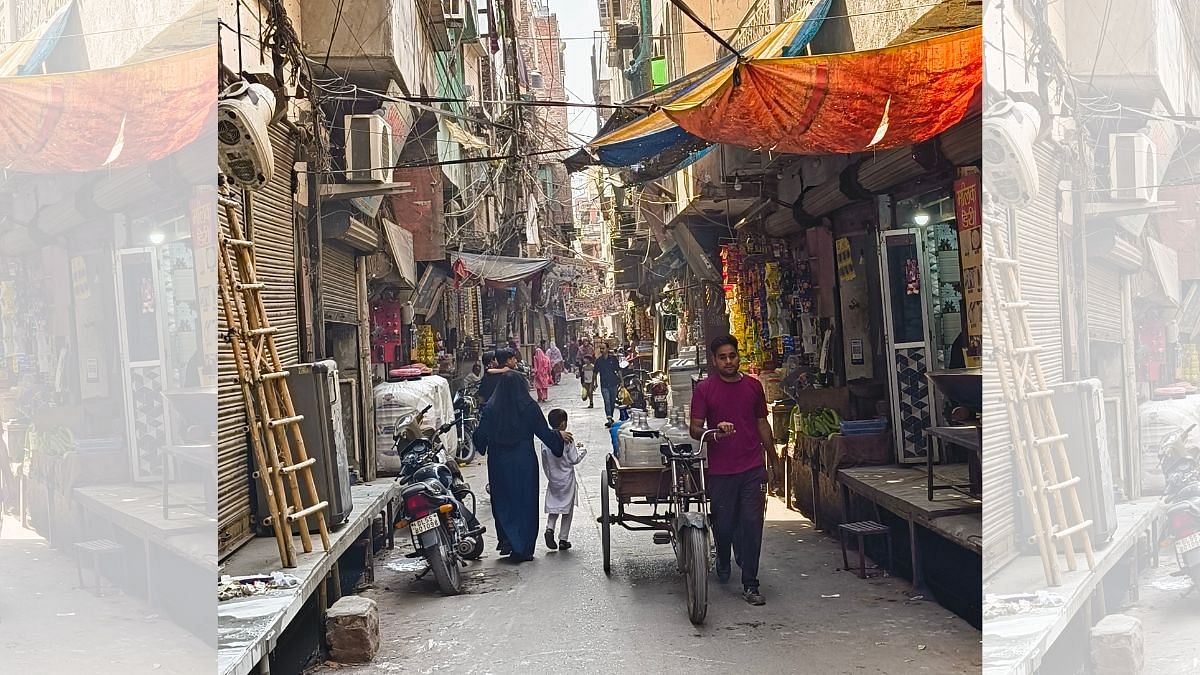
“Is Kanhaiya a Muslim? We are supporting because he is a thinking, rational man who raises issues that matter. Just listen to his speeches and interviews. Wo padha likha hai (he’s educated). Even Hindus, who are educated, will vote for Kanhaiya. I overheard people speaking about him in a nearby park this morning,” Azhar said.
While many find Kanhaiya’s soaring oratory appealing, some like Shamshuddin, many decades older than Azhar, believe the “rupture in Hindu-Muslim harmony” can be healed by making the Congress win.
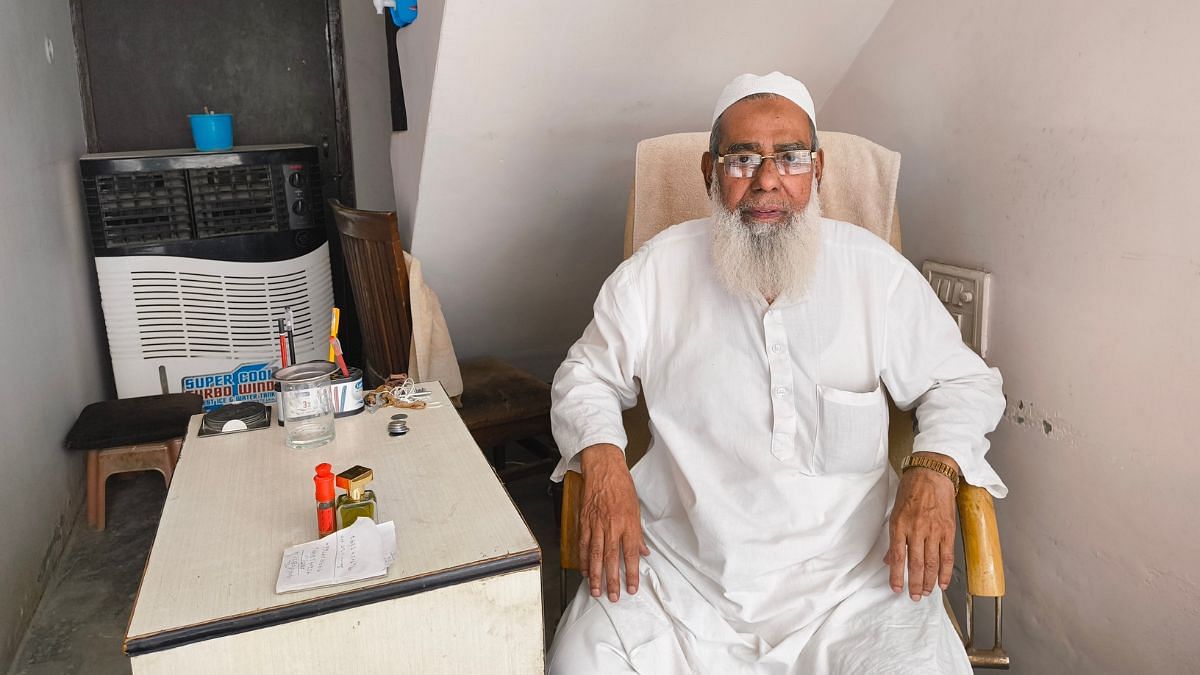
“I am deeply disappointed by the speeches being made demonising Muslims. We have spent our entire lives in this country, toiling, bringing up families. This is our country too,” Shamshuddin said.
In conversations, what also comes out prominently is the displeasure that the community harbours for the AAP ever since the riots took place.
“They (AAP) stayed away, played the role of mute spectators during the riots. If they are not in an alliance with the Congress in the next assembly polls, the AAP candidate from this area will lose,” said Omar, who works in a local bakery in Chauhan Banger, adjoining Jafrabad.
Also read: Will go to BJP headquarters Sunday, arrest us all, says Kejriwal after Bibhav Kumar arrest
Demographic calculations
Chauhan Banger is among the six civic wards that Muslim candidates fielded by the Congress had won in the 2022 municipal polls in Delhi. In fact, here, the Congress candidate had defeated the AAP candidate by over 15,000 votes, which was the second highest margin of victory in the polls. The biggest victory margin was in the Chandni Mahal ward, also Muslim dominated, where the Congress had defeated the AAP by over 17,000 votes.
As many as 30.5 percent of Delhi’s Muslims live in Northeast Delhi district, most of which overlaps with the eponymous constituency. The district itself has a Muslim population of 29.34 percent, according to the 2011 Census, marginally lower than Central Delhi where the community accounts for 33.4 percent of the population, but in absolute numbers (1.94 lakh) Central ranks below Northeast (6.58 lakh).
In most parts of the constituency, the roads are potholed and littered with uncollected garbage, reflecting administrative neglect. People — particularly in the unauthorised colonies that have come up across the area due to the influx of migrants from Uttar Pradesh (especially from what is known as purvanchal) and Bihar — complain of dirty tap water and civic apathy.
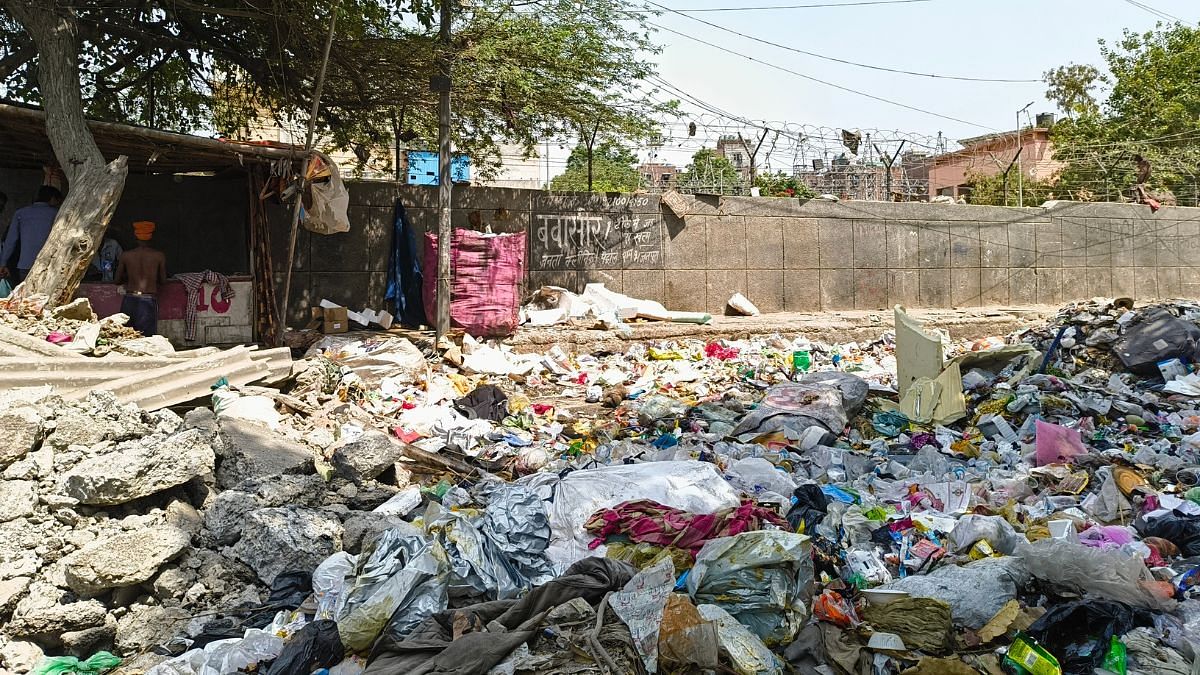
With the explosion of population — from 10.85 lakh as captured in the 1991 census to 22.42 lakh in 2011, when the last census was undertaken — the district has also seen a major shift in its demographics.
While land-owning Tyagis, classified as Bhumihars, dominated the area in the past, it’s the purvanchalis that have emerged as the largest catchment area for political parties.
Tiwari is a purvanchali, while Congress is hoping to cash in on Kanhaiya’s Bihari descent. Among the most popular MLAs of the AAP in Delhi is Sanjeev Jha, a purvanchali who represents the Burari assembly segment of Northeast Delhi Lok Sabha constituency.
Ensuring smooth passage for Kanhaiya tricky
While assembly polls are a cakewalk for Jha, who has won the seat three consecutive times by large margins, the same organisational machinery that works for him is finding it challenging to ensure a smooth sailing for Kanhaiya, not just on account of Modi’s popularity, but also the student leader’s past, particularly the sedition case against him.
Senior Congress leader Sachin Pilot, who has been appointed as observer in the Northeast Delhi seat, told ThePrint in an interview last week that Kanhaiya, a “tough young man”, would wrest the seat from the BJP.
“He has been in charge of the NSUI (National Students’ Union of India), he has been working with the party. Of course he may have contested some election, in some other state, from some other party, but that’s in the past. In the last few years, he has worked dedicatedly (for the Congress). He has been a vocal voice on many issues and a lot of young people listen to what he has to say. The BJP has always targeted him but the fact of the matter is he is a vociferous speaker, he is a tough young man. With the alliance, with the support base, and the hard work put in by us, we should win the seat,” Pilot said.
In 2020, soon after capturing power for the third time, it was the Kejriwal government that had granted sanction to the Delhi Police to prosecute Kanhaiya and two others for allegedly raising anti-India slogans at an event in JNU in 2016. Kanhaiya, who was then with the CPI, had then welcomed the decision, saying he was hoping for a quick judicial trial rather than a media trial.
Moreover, a feeling among a section of the AAP workers is that instead of localising the election, Kanhaiya is making his task difficult by targeting Modi in his speeches. In one of his recent speeches, Kanhaiya, referring to Modi’s Shastri Park rally, said, “I am just an MP candidate and the PM had to come here. Shower me with your blessings, I will bring the entire government to this side of the Yamuna.”
Now, AAP workers are having to defend Kanhaiya from being labelled “anti-national” by the BJP.
“We are telling people that these were mere allegations against him and that the Supreme Court has given him a clean chit,” said an AAP worker campaigning for Kanhaiya. As things stand, the case has not even reached a conclusion in the trial court, let alone the apex court.
Divided by political preferences, what unites the two communities is the refrain of traders that business was down across the densely populated area — 36,155 people per sq km compared to Delhi’s average of 11,320 people sq km — dotted with bustling markets and small scale industrial units.
“What option do we have?” said Ajesh Kumar, a jeweller in Burari’s Sant Nagar market. “Kahin pe toh vote kharab karna hai (have to go waste our vote somewhere). So, we would much rather vote for Modi. It’s not as if the Congress can tackle price rise and magically produce jobs. Wo (Muslims) kehte hai hum Modi wale hai. Then so be it.”
(Edited by Zinnia Ray Chaudhuri)
Also read: Kejriwal’s interim bail charges up AAP. Lok Sabha poll campaign set to turn ‘aggressive’













